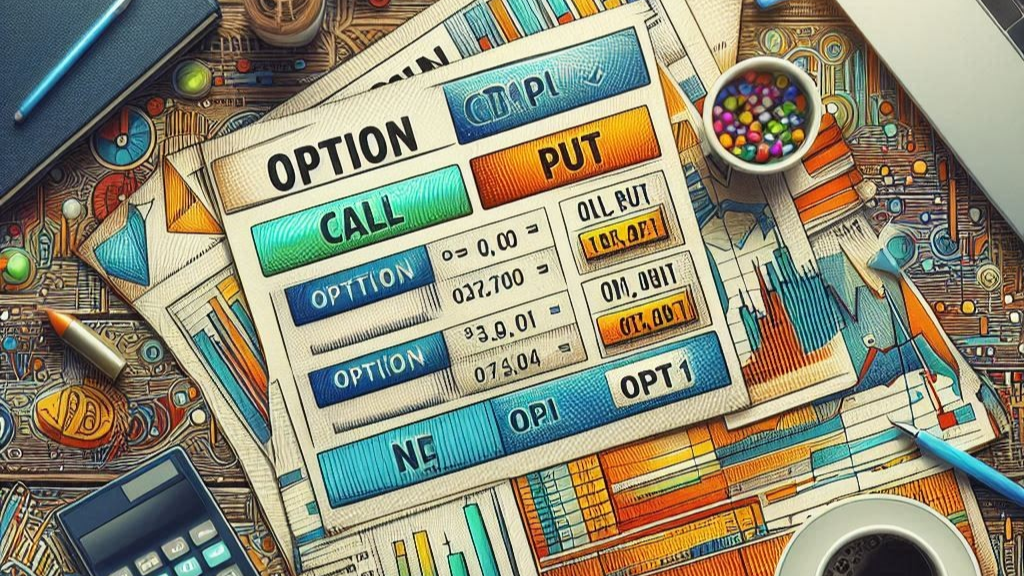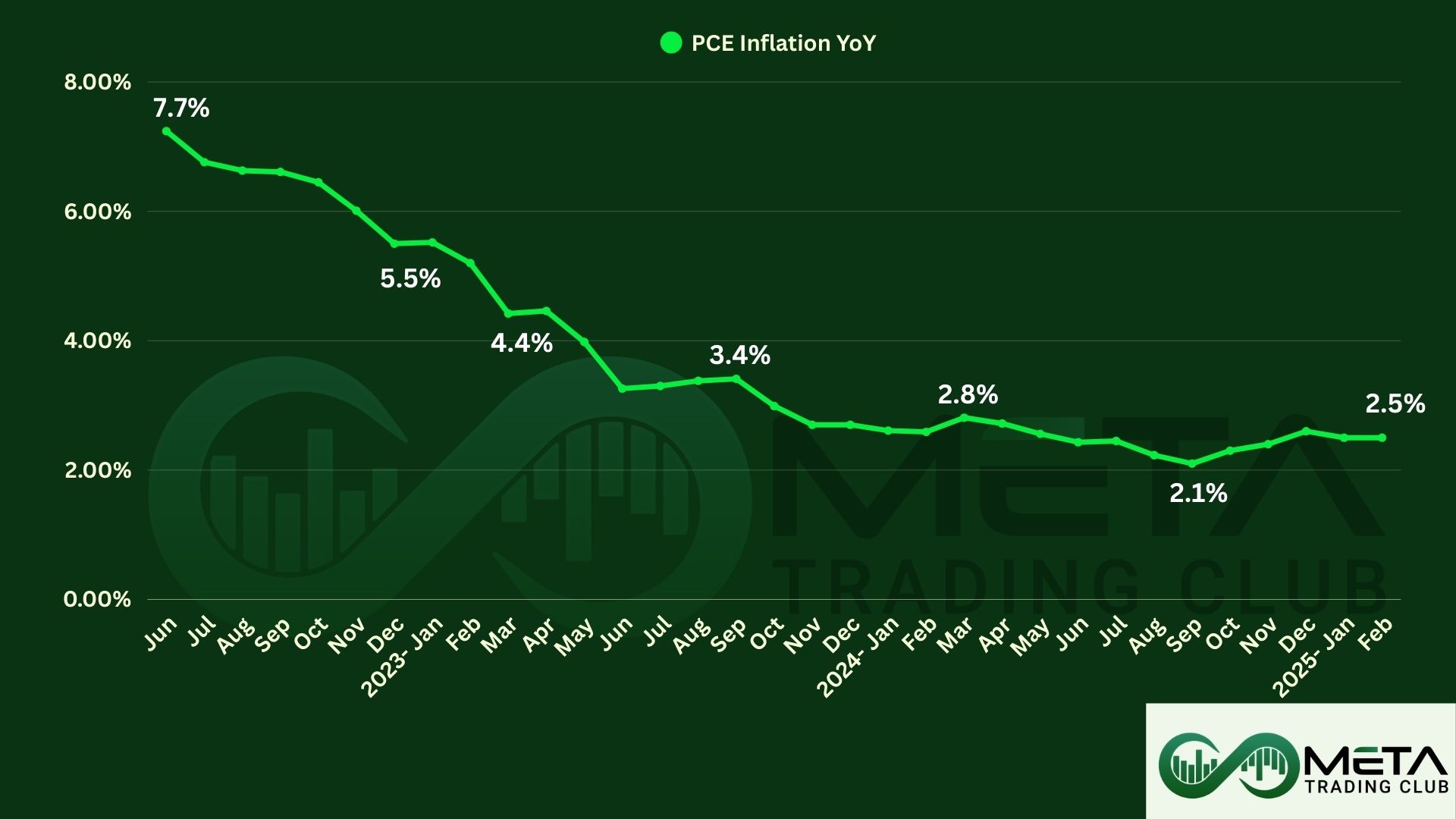Option trading is a way to get involved in the stock market that’s a little different from trading or investing in assets (like stocks or ETFs) directly. If you’re considering buying and selling options, here’s what you should know. Options are traded over 40 million times every day. Knowing that, you may be wondering what’s all the fuss about?
In this article, you’ll learn everything you need to know to master the basics of financial options, even as a beginner. Also, we’ll explain what options are in simple terms.
Table of Contents
What are Options?
An option is a legal contract that gives you the right to buy or sell an asset (like stock and ETF) at a specific price by a specific time. They are known in the financial world as derivatives, because they derive their value from an underlying Asset. The underlying Asset may be a stock, index, currency, commodity, or any other type of security. Customers can buy or sell options.
Options have existed for centuries but became widely available after the Chicago Board Options Exchange (CBOE) was opened in 1973. CBOE’s options had standard features, making them uniform and accessible to a much wider range of traders.
Because options are complex instruments, they are not suited to all traders. However, traders who take the time to learn options may find significant opportunities to use their capital more effectively and manage risk on option trading.
Buyer of an Option: Who has the right but not the obligation to buy or sell the underlying asset.
The right to buy an asset is known as “Call”, while the right to sell is called “Put”.
When a call option is purchased, the buyer anticipates that the underlying asset’s price will rise. Similarly, a put option is purchased when the buyer expects the underlying asset’s price to fall.
The seller of the option: Known as the “writer” of the option. The writer’s expectation differs from the buyers. When the option writer expects the price to fall, he writes a call option. Also, he writes put options if the price is expected to rise.
Terminology of Options
There are a few key concepts you must know to understand what an option is:
Call option: This contract gives you the right to buy an asset by a certain date for a certain price.
Put option: This contract gives you the right to sell an asset by a certain date for a certain price.
Underlying asset: The asset you want to buy, or sell is the underlying asset.
The contract size: The minimum number or quantity of units that must be bought or sold under a contract. Contract sizes will differ from one contract to another.
Strike price (or exercise price): The Price at which the buyer and the seller of the option agree to enter the option contract. The strike price is fixed and does not change during the entire period of the contract’s validity.
Expiration date (or maturity date): The contract expires on this date. The contract is valid until the expiration date. Because of this date, option traders have a limited window of opportunity to make money, making option trading a race against the clock.
Spot Price: The price of an option is based on some underlying asset. Spot price refers to the current market value of an underlying asset. The decision to buy or sell a call or put option is based on the expected future direction of the spot price.
Premium: The price the option buyer pays the option seller to enter the contract. The option premium can be broken down into two components (intrinsic value and time value).
Exercise: Means converting the option trading contract into shares at the strike price.
Intrinsic Value: The difference between the cash market spot price and the strike price of an option is the intrinsic value. It can be positive, zero or negative.
European Options vs. American Options
Options can have different styles: American or European (a distinction that has nothing to do with where you live). Also, it has nothing to do with the two types of options (calls and puts).
The American option refers to a contract you can exercise at any time up until the expiration date. From the moment you buy the contract to the moment it expires; you can enforce what’s in the contract whenever you feel like it.
European options can only be exercised on the expiration date itself. Also, they can’t be exercised before that.
Most of the options traded on exchanges are American. However, European options are easier to analyze, as they maintain put-call parity.
What are the Different Types of Underlying Assets?
In theory, anything can be used as an underlying asset. But the most common are:
- Stocks: Stock options refer to options for which the underlying asset is a company’s stock.
- Indices: When the option contract refers to a stock index like the S&P 500 or Dow Jones.
- ETFs (Exchange Traded Funds): These are portfolios of assets that trade like a stock. They too, can be used as the underlying asset of an option contract.
- Futures: Options on futures contracts following the price of anything from oil to gold, to corn.
- Foreign Currencies: Options on foreign currency exchange rates (Option on FOREX pairs).
- Interest Rates: Options that allow you to benefit from changes in the rate of bonds (like the U.S. Treasury securities).
Option Types
There are 2 main types of basic options contracts: calls and puts. Also, there are 4 types of options positions:
- A long position in a call option.
- A long position in a put option.
- A short position in a call option.
- A short position in a put option.
Long position means buying and short position means selling.
- Long call: You have a long call if you are the option holder with a contract allowing you to buy shares of an asset.
- Short call: Shorting or selling a call is when you are giving another party the right to buy an asset from you at a specific price.
- Long put: A long put means you are an option holder who has bought the right to sell shares of an asset at a specific price.
- Short put: Shorting or selling a put means you are giving another party the right to sell an asset to you at a specific price.
- Call Option buyer: wants the stock price to go up.
- Put Option buyer: wants the stock price to go down.
- Call Option seller: wants the stock price to go down or stay the same.
- Put Option seller: wants the stock price to go up or stay the same.
Someone buying an options contract is long on something because they expect the asset to perform in the way they want over the length of the options contract.
However, the option writer, meanwhile, doesn’t think the asset will perform in the way the option holder expects, so they’re short.
Here is an important question, why would someone sell an option contract and take the chance of having to sell or buy an asset at an unfavorable price because someone else said so?
The Answer is because it receives a premium.
Options Contract Premium
Premium is the price the buyer pays for the contract. It’s the cost of the privilege to buy/sell a stock for whatever you want whenever you want.
As you can imagine, the more advantageous the contract is for the buyer, the more the seller will want to receive in premium. No such thing as free lunch.
Although the strike price of the contract and the price of the stock influence the cost of the premium. As the buyer, you pay just to open the contract. Think of it as the price to pay for the sheet of paper that holds the terms of the option trading contract, if everything wasn’t as electronic and automatic as it is today.
Option Chain
Let’s look at an option chain with call and put option trading examples to further understand this. An option chain lists all the available options contracts for a given security. It shows all listed puts, calls, their expiration, strike prices, volume, and premiums (ask and bid price).
The following image is the option chain for September 2024 Apple options. On June 10th, 2024, Apple traded at $193.
Source: Nasdaq
On the left, we have the calls. On the right, we have the puts. All options have a contract size of 100, and a single expiration date (September 20th). Also, the option style is American.
The prices are for 1 share of Apple. Since the contract size is 100, the actual amount involved in the transaction is 100 times the prices displayed.
Notice how the option price changes with each strike price. The price of calls decreases as the strike increases (having the right to buy Apple shares for cheaper at $190 is more valuable than at $210). Whereas the price of puts increases as the strike increases (having the right to sell Apple shares for more, like $210, is more valuable than for $190).
Option trading contracts’ premiums are constantly changing to reflect price movements in the underlying asset.
The Change column tells you the variation of the premium compared to yesterday. Since Apple had a green day, you can see that put option contracts lost value. Meanwhile, calls got more expensive.
Moneyness
Moneyness refers to how the strike price of the option relates to the current trading price of the underlying asset. In addition, options are classified by traders into three categories based on the relationship of the strike price to the underlying stock price at the current time. The categories describe an option’s moneyness.
Each of the three categories is driven by the relationship between the current stock price and option strike price.
In-The-Money (ITM)
ITM does not mean that the trader is going to make a profit necessarily, but instead describes the position of the strike price against the stock price at any given time.
For example, if you have a call option and the stock price is greater than the strike price, that option is said to be in-the-money and has intrinsic value. It’s just describing the relationship between the two prices and not the trader’s actual profitability. If you have a put option and the stock price is lower than the strike price, then your position is in-the-money.
Out-Of-The-Money (OTM)
Again, OTM doesn’t mean the trader has lost money on a trade but is simply a generic description of where the strike and stock prices are in relation to each other at present.
For a call option position to be considered OTM, the stock price would need to be lower than the strike price; for a put option, the stock price would need to be higher than the strike price.
At-The-Money (ATM)
Options are ATM when the strike price and stock price are at the same level, whether you are trading calls or puts. It describes a price level parity between stock and strike prices.
Options Payoff Diagram
A payoff diagram is a graphical representation showing you how much money you’ll make given a scenario at the expiration of an option contract. Also, the option payoff is the cash flow the option contract generates at the expiration date (European option) or at the exercise date (American option).
Payoff diagrams show you when an option is more or less valuable. Here’s the payoff diagram for the 4 basic option positions:
The Y-axis represents the profit from the strategy at expiration (or when you exercise the contract).
However, the X-axis is the market price of the underlying asset (ST) on that date. K is the strike price chosen for the contract. When the price at which the asset trades on the market and the strike match, it means ST = K.
Let’s look at each scenario to help you further understand what options are and how do they work:
Long Call ITM
For a call option, the option trading contract is in-the-money if the strike price is below the current value of the stock trading in the market.
In this example, we have a $100 strike call option. The option is ITM if the stock price is higher than $100 because you can buy the stock for $100 when it is trading at $110 ($10 of intrinsic value).
Long Put ITM
Underlying security must be above the break-even point for an ITM money option to be profitable. For a put option, the option will be in-the-money if the strike price is above the current value of the stock trading in the market.
In this example, we now have a $100 strike put option. The option trading contract is ITM if the stock price is lower than $100 because you can sell the stock for $100 when it is trading at $90 ($10 of intrinsic value). So, the y-axis shows that the option contract moves toward profitability as the stock price falls below $100, and a loss when the stock price is above $100.
Long Call OTM
For a long call option, the option is out-of-the-money if the strike price is above the current value of the stock trading in the market. A long option position will have the max loss if the contract expires out-of-the-money.
In this example, we have a $100 strike call option. The option trading contract is OTM if the stock price is lower than $100 because you can buy the stock for $100.
This is the main downside of short positions on any security. When you buy an asset, the worst that can happen is it goes to zero. But when you sell it, there’s no limit to how much you’ll have to pay to buy it back.
Long Put OTM
For a long put option, the option would be out-of-the-money if the strike price is below the current value of the stock trading in the market.
In this example, we again have a $100 strike put option. The option trading contract is OTM if the stock price is higher than $100 because your put option only entitles you to sell the stock for $100. But if it’s trading at $110, why would you use the option? You wouldn’t. So the option is OTM.
Long Call ATM
Options are said to be ATM when the strike price and the stock price are the same so this applies to both long calls and long puts. Notice that ATM long options will still lose money at expiration because of the options’s cost.
For example, if you buy a $100 long call for $5.00, the underlying stock price would need to be above $105 to make money. Even if the stock closes at your $100 strike price on expiration, you will have a $500 loss. This is why it’s so important to understand the moneyness.
It is rare to have options with the same strike price as the stock price, so most options traders consider anything within a couple of points to be ATM. This is essentially the “tipping point” between an option being OTM and ITM.
What is Intrinsic Value?
Intrinsic value reflects the gain from the immediate exercise of an option trading contract. Also, it is the positive difference between an option’s strike price and the price of the underlying asset. It exists if the strike price is below the current market price for calls, and above for puts.
- When traders say an option is in-the-money, they are saying it has intrinsic value.
- Out-of-the-money options have no intrinsic value.
- When traders say that the contract has expired worthless, it’s because an option expired out-of-the-money.
The relationships between ITM, OTM, and ATM are all used to help determine the intrinsic value of the option, which is a key factor in option pricing.
Extrinsic Value
Extrinsic value is the value of an options contract beyond its intrinsic value. The extrinsic value of an options contract is also called the time value because the remaining value is dependent on external factors such as the time remaining on the contract, the volatility of the underlying security, the current risk-free interest rate, and the dividend rate of the underlying security.
If the price of the underlying security is far above or far below the contract’s strike price, then the extrinsic value factors have little influence on the option’s price.
Extrinsic value can be viewed as the true cost of an options contract because the extrinsic value represents the cost of the opportunity to benefit from future price movements of the underlying security.
As with most things, time is money. In this case, time is of value. Typically, the more time that remains until expiration, the higher the extrinsic value of the option. traders will pay a higher premium for additional time since the contract will have longer to achieve profitability from a favorable move in the underlying asset.
And the reverse is true. When there is less time remaining until expiration, traders are less willing to pay a premium, because the stock has less time to become profitable.
Final Words
On the face of it, options may seem like complicated derivative instruments with distinct terminology and esoteric strategies. However, once understood, they can be worthwhile financial instruments, providing risk mitigation, hedging and leverage.
Since time is of the essence, traders must be on their toes, keeping a close eye on the underlying asset’s price movement and the information flow that impacts it. Quick decision making, maintaining strict discipline, and adhering to stop losses religiously is the key to success. So, take your trading skills to the next level with our exclusive 4-week Incubator program. Our expertly crafted curriculum is laser-focused on equipping you with the knowledge and skills necessary to maximize your profits and achieve your financial goals.
FAQs
- What do you mean by options?
options are a type of financial derivative that gives the buyer the right, but not the obligation, to buy (call option) or sell (put option) an underlying asset at a predetermined price (strike price) on or before a specific date (expiration date). - What is options trading for?
Options trading serves several purposes in financial markets such as: hedging, speculation and income generation. - How does option work?
Call Option means buy to profit from a stock’s price rise. Also, Put Option means buy to profit from a stock’s price fall. You pay a premium for the right, not the obligation, to buy/sell at the strike price before the expiration date. If the market moves favorably, you can exercise the option to make a profit; otherwise, you lose the premium paid. - Is Option Trading a skill or luck?
Option trading is primarily a skill, although like any form of trading or investing, luck can also play a role. Successful options trading requires understanding market trends, the mechanics of options, and various trading strategies. It involves analytical skills to evaluate potential trades, risk management to protect investments, and discipline to stick to a trading plan. - Is option better than stock?
Whether options are better than stocks depend on the investor’s goals, risk tolerance, and investment strategy.





















